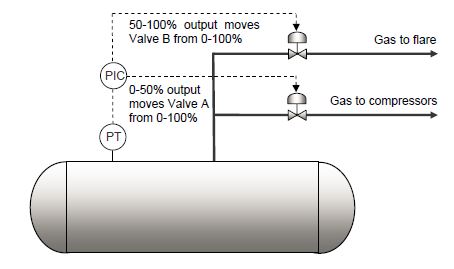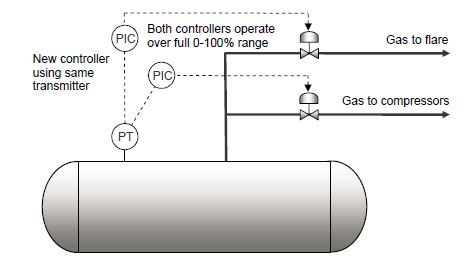Split Range Control is controlled by coordinating the actions of several manipulated variables, all of which have the same effect on the controlled output.
The final alternative to simple feedback control to be discussed in this section is Split-Range Control . This is distinguished by the fact that it has
- one measurement only (the controlled variable)
- more than one manipulated variable
The control signal is split into several parts each associated with one of the manipulated variables.
A single process is controlled by coordinating the actions of several manipulated variables, all of which have the same effect on the controlled output.
Split Range Control
Below are described two situations where split-range control is used in chemical processes.
Example 1 - Control of Pressure in a Reactor
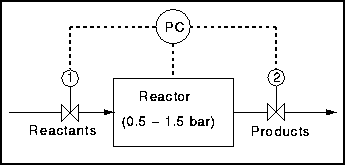
The aim of this loop is to control the pressure in the reactor. It may be possible to operate this system with only one of the valves but the second valve is added to provide additional safety and operational optimality.
In this case the action of the two valves should be coordinated. Thus for example if the operating pressure is between 0.5 and 1.5 bar then the control algorithm could be
- If the pressure is below 0.5 bar then valve 1 is completely open and 2 is completely closed.
- If the pressure is between 0.5 and 1 bar then valve 1 is completely open while 2 is opened continuously as the pressure rises. Note that both these actions lead to a reduction in pressure.
- If there is a large increase in pressure and it rises to above 1 bar then valve 2 is completely open while 1 is closed continuously.
- If the pressure reaches 1.5 bar then valve 1 is shut and 2 is open.
A graph of these valve positions with respect to pressure is shown below.
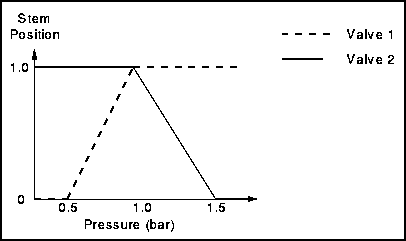
Example 2 - Control of Pressure in a Steam Header
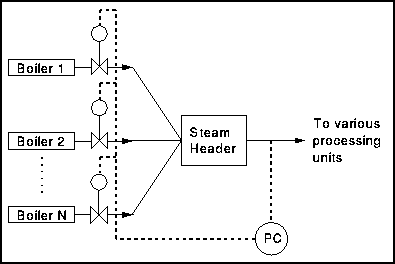
The aim of this control loop is to maintain a constant pressure in the steam header subject to differing demands for steam further downstream. In this case the signal is split and the steam flow from every boiler is manipulated.
An alternative manipulated variable could be the steam production rate at each boiler via the firing rate. A similar control scheme to the above could be developed for the pressure control of a common discharge or suction header for N parallel compressors.
